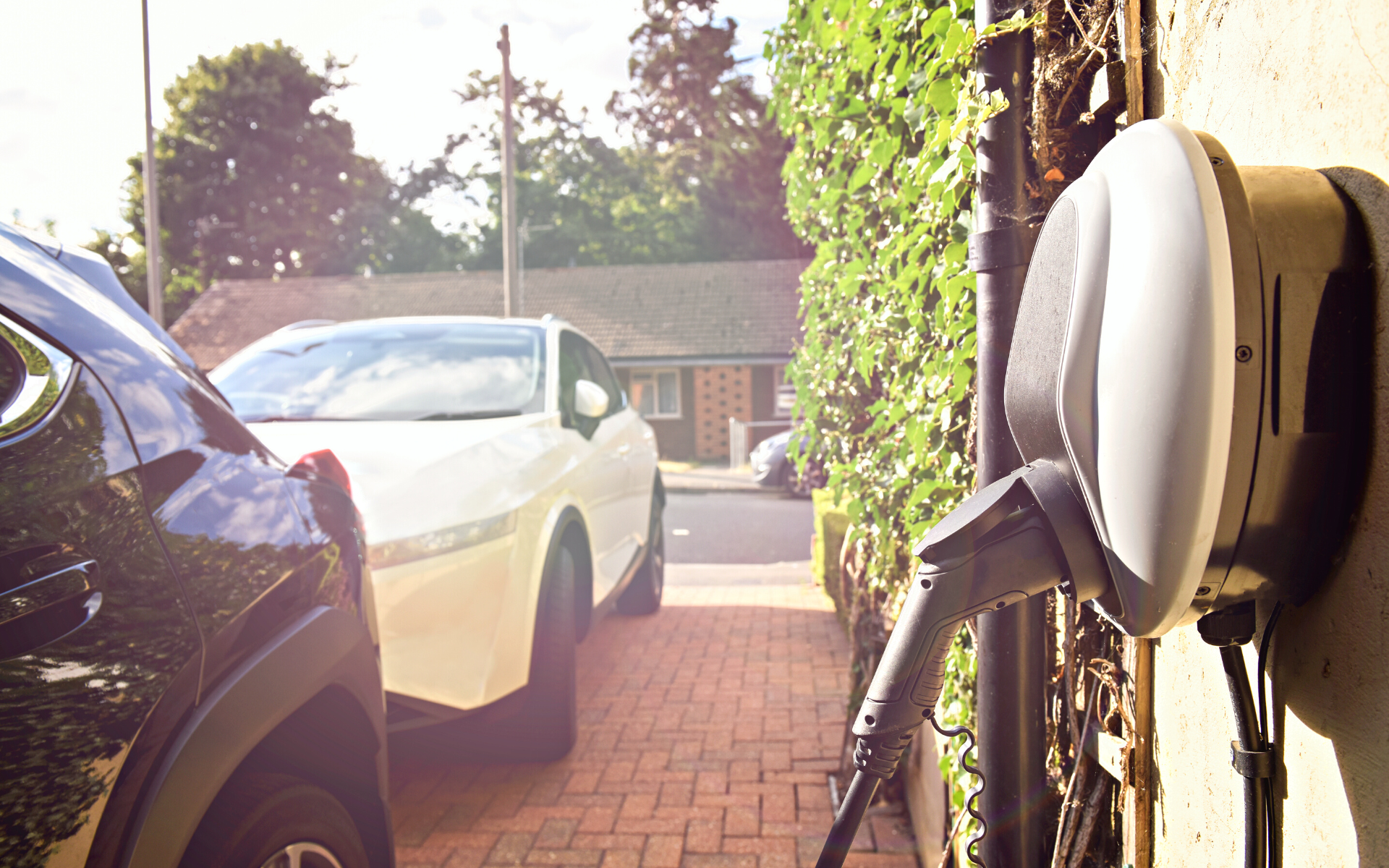How to Charge Multiple Electric Vehicles at Home

4 Min. Read
More people are purchasing electric vehicles (EVs) or planning to than ever before, and new models will be flooding showrooms in the coming months with the growing realization that environmental concerns cannot be ignored. While the transition to a first EV is a big step, multicar households should think ahead to being a two (or more) electric car family.
It may seem many years off before EVs exceed combustion-engine cars on local parking lots, especially with the average age of vehicles on U.S. roads topping 12 years. However, with the price for regular gas topping $5 per gallon in 9 states and over $6 in California, demand is escalating.
Powering Two-Car Homes
This may seem shockingly low in car-crazy California or Montana, where homes reportedly average 4.5 vehicles per household, however, an estimated 58% of households in the U.S. have two cars. For those used to a multiple-car home, purchasing a first EV and avoiding gas stations has many households considering the addition of a second EV in their home, whether new or used, in the future. While that decision may not be imminent, it is important to think ahead about options for EV charge stations.
Electric automobiles come with a Level 1 charger that plugs into any standard outlet. That may be convenient, but Level 1 chargers are very slow. They only add three to five miles of range per hour. They are adequate for drivers with short commutes, but it can take an entire day to add enough power to drive 125 miles. If you have two EVs, you could theoretically run two very long cords from the cars to two outlets. However, most EV owners opt to install a Level 2 EV charger.
A Level 2 EV charger is a relatively affordable, faster, and more practical at-home charging solution. These EV charge stations add 18 to 40 miles of range with each hour of charging. Level 2 installation requires connecting the 240-volt circuit from your breaker panel to where you set up the charger. The installation involves a dedicated circuit, much like an electric range or clothes dryer, because of the voltage involved. The effort may also require upgrading the electrical panel and always requires obtaining permits for the project.
Upgrading your electric panel and circuits to install a Level 2 EV charger is one area where it makes sense to anticipate a future second EV. You might as well have a second 240V circuit installed at the same time as the first—just in case!
Is one Level 2 charger adequate for a two-car family? It depends on the mileage driven and your schedules. The average miles per day in the U.S. was 39 before the pandemic forced people to stay home. Now, with high gas prices, it is probably lower than 39, but let’s assume that number still stands. If both vehicles drive about 40 miles a day, the vehicles could easily be charged on alternate nights. Adding back 80 miles of range every other night would only take three to four hours, which would still allow the homeowner to take advantage of lower overnight utility rates too!
Options to Charge Two Cars at Once
If the two vehicles are needed for longer commutes, however, or will often be needed for long drives at the same time, opting for one charge point could be problematic. Here are options for EV charge stations to consider:
- Supplementing charging at home with periodic visits to more costly public charging stations. If the need to drive more is rare, this option probably makes more sense than installing equipment you will hardly use. However, charging at home is convenient, which is why it is the method most EV drivers use.
- “Install” two EV charge stations. If space and your budget allow, you could install two Level 2 EV chargers. Or you could install one Level 2 charger and use the Level 1 option to boost the range a little in the car not using the Level 2 station.
- Opt for a charging station that has the capacity to charge two cars at once on one circuit. It does this by splitting the charging current between the vehicles. The result may be a slower charging time but still very efficient. Many EV Charging manufacturers are now providing this feature.
Qmerit Can Help
It’s important to choose the right products since not all chargers have a dual charging feature, and new equipment is being introduced regularly as more EVs are filling garages. Qmerit can help. Qmerit is a widely recognized industry leader in helping homeowners and businesses install and maintain EV charge stations. Our Certified Installers are vetted and trained to ensure quality and safety.
Now that you have your electric vehicle and have realized charging in the wild may not be a sufficient solution, you are likely looking at getting a home EV charger installed. Qmerit simplifies installation for EV drivers across the U.S. and Canada with our unsurpassed network of certified electricians specializing in EV charging technologies. Get started today by providing information about your home and a few photos and receive an upfront pricing or custom quote offer.
